Premium Only Content
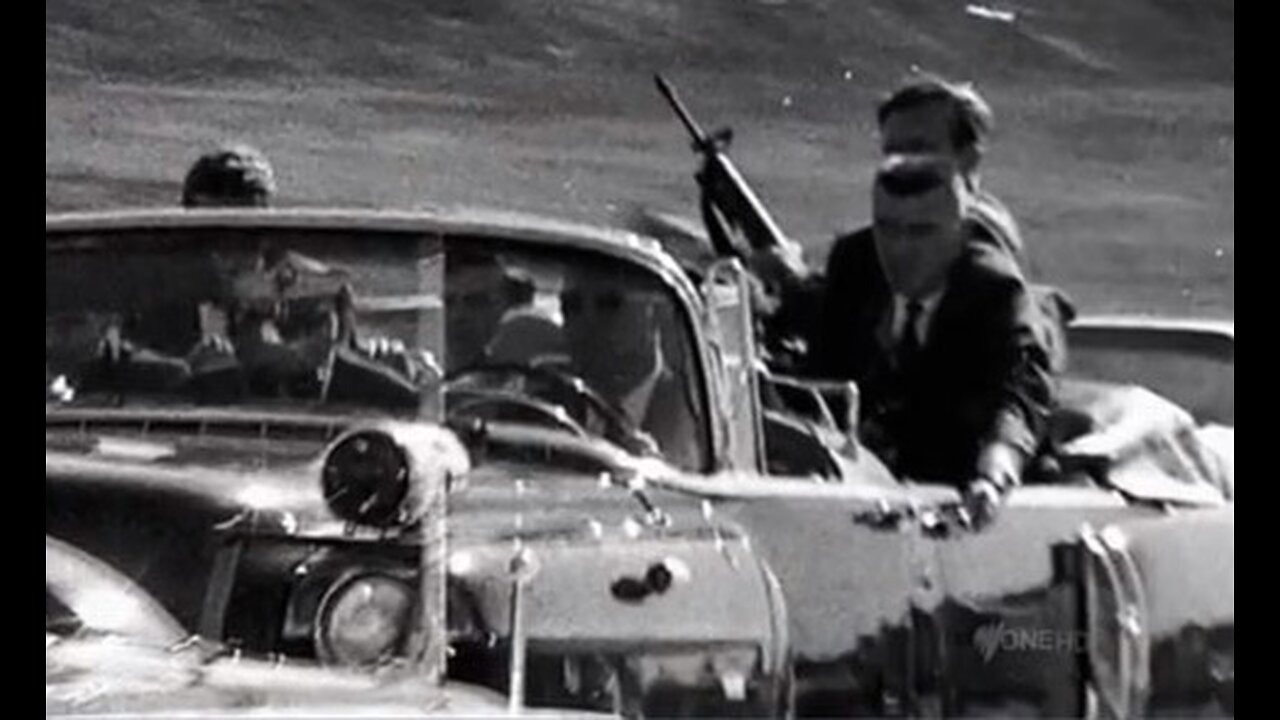
The JFK Assassination & the Mafia Connection (1988)
When a CIA Officer Was Told He Paid for the Oswald Project: https://www.patreon.com/posts/when-cia-officer-76447318
Jonathan Kwitny examines the assassination of President John F. Kennedy and presents new evidence that the 'crime of the century' was a Mafia-directed 'mob hit.' "The show opens with a 30-minute documentary featuring interviews with investigators and witnesses, all of whom strongly suggest proof of a link between Lee Harvey Oswald, Jack Ruby, and Mafia boss Carlos Marcello. Also suggested is that the government, including the FBI, CIA, and even Attorney General Robert Kennedy, covered up this link for reasons of their own. "Kwitny discusses this new evidence, which overturns the Warren Commission's 'lone gun' theory, with Pennsylvania Senator Arlen Spector and David W. Belin, both former counsels to the Warren Commission; and with John H. Davis, author of 'Mafia Kingfish: Carlos Marcello and the Assassination of JFK' and David E. Scheim, MIT mathematician and author of 'Contract on America,' a work which grew out of 15 years research into tens of thousands of pages of raw data on the event. "In a fascinating and frequently heated discussion, Specter and Belin suggest that Scheim has his facts wrong but both appear unable to dispute factually, the link between Oswald, Ruby and Marcello.
Carlos Joseph Marcello[1] (Italian: [marˈtʃɛllo]; born Calogero Minacore [kaˈlɔːdʒero minaˈkɔːre]; February 6, 1910 – March 3, 1993) was an Italian-American crime boss of the New Orleans crime family from 1947 to 1983.
Aside from his role in the American Mafia, he is also notorious for the reason that G. Robert Blakey and others have alleged that Carlos Marcello, Santo Trafficante Jr., and Sam Giancana conspired in the 1963 assassination of U.S. President John F. Kennedy in retaliation for federal investigations and prosecutions that threatened both the power and the multibillion-dollar profits of organized crime.[2][3]
Early life
Marcello was born on February 6, 1910, to Sicilian immigrants Giuseppe and Luigia Minacore, in Tunis, French Tunisia.[4] With his family, Marcello immigrated to the United States in 1911 and settled in a decaying plantation house near Metairie in Jefferson Parish, a suburb of New Orleans. His father adopted a different family name to avoid confusion with his supervisor on the sugar plantation where he had started work. His overseer, also Minacore, chose the appellation Marcello.[5] The family changed all their other names, and Calogero Minacore became Carlos Joseph Marcello. He had eight siblings: Peter, Rose, Mary, Pascal, Vincent, Joseph Jr., Anthony and Salvador Marcello.
Young Marcello turned to petty crime in the French Quarter. He was later imprisoned for masterminding a crew of teenage gangsters who carried out armed robberies in the small towns surrounding New Orleans. At the time, local newspapers compared him to the character of Fagin from Charles Dickens' novel Oliver Twist. This conviction was later overturned. However, the following year he was convicted of assault and robbery and was sentenced to the Louisiana State Penitentiary in West Feliciana Parish for nine years. He was released after five years.
YoungCarlosMarcello2.jpg
In 1938, Marcello was arrested and charged with the sale of more than 10 kg (23 pounds) of marijuana. Despite receiving another lengthy prison sentence and a $76,830 fine, Marcello served less than ten months and only paid a $400 fine thanks to a deal cut with former Governor Huey Long.[citation needed] On his release from prison, Marcello became associated with Frank Costello, the leader of the Genovese crime family, in New York City. At the time, Costello was involved in transporting illegal slot machines from New York City to New Orleans. Marcello provided the muscle and arranged for the machines to be placed in local businesses.
Louisiana crime boss
By the end of 1947, Marcello had taken control of Louisiana's illegal gambling network. He had also joined forces with Genovese crime family associate Meyer Lansky in order to skim money from some of the most important casinos in the New Orleans area shortly after becoming associated with the Todaro family through marriage. According to former members of the Chicago Outfit, Marcello was also assigned a cut of the money skimmed from Las Vegas casinos, in exchange for providing "muscle" in Florida real estate deals. By this time, Marcello had been selected as "The Godfather" of the New Orleans Mafia, by the family's capos and with the approval of The Commission after the deportation of his predecessor, Sylvestro Carolla, to Sicily. He held this position for the next thirty years. In a 1975 extortion trial, two witnesses described Marcello as "The Godfather" of the New Orleans crime syndicate.[6]
Marcello appeared before the U.S. Senate's Kefauver Committee on organized crime on January 25, 1951. He pleaded the Fifth Amendment 152 times. The Committee called Marcello "one of the worst criminals in the country".[7]
Marcello continued the family's long-standing tradition of fierce independence from interference by mafiosi in other areas. He enacted a policy that forbade mafiosi from other families from visiting Louisiana without first asking permission.
On March 24, 1959, Marcello appeared before the United States Senate's McClellan Committee investigating organized crime. Serving as Chief Counsel to the committee was Robert F. Kennedy; his brother, Senator John F. Kennedy, was a member of the committee. In response to committee questioning, Marcello invoked the Fifth Amendment and refused to answer any questions relating to his background, activities, and associates. From then on, Marcello became an avowed enemy of the Kennedys.[2]
The New Orleans crime family frequently met at Mosca's Italian restaurant in the New Orleans suburb of Avondale, in a building which Marcello had owned.[8]
Prosecution
On April 4, 1961, the U.S. Justice Department, under the direction of Attorney General Robert F. Kennedy, apprehended Marcello as he made what he assumed was a routine visit to the immigration authorities in New Orleans, then deported him to Guatemala.[9][10] Two months later, he was back in New Orleans. Thereafter, he successfully fought efforts by the government to deport him.[11][12] His immigration lawyer was Jack Wasserman.
In November 1963, Marcello was tried for "conspiracy to defraud the United States government by obtaining a false Guatemalan birth certificate" and "conspiracy to obstruct the United States government in the exercise of its right to deport Carlos Marcello". He was acquitted later that month on both charges. However, in October 1964, Marcello was charged with "conspiring to obstruct justice by fixing a juror [Rudolph Heitler] and seeking the murder of a government witness [Carl Noll]". Marcello's attorney admitted Heitler had been bribed but said that there was no evidence to connect the bribe with Marcello. Noll refused to testify against Marcello in the case. Marcello was acquitted of both charges.[13]
In September 1966, 13 members of the New York, Louisiana and Florida crime families were arrested for "consorting with known criminals" at the La Stella Restaurant in Queens, New York. However, the charges were later dropped. Returning to New Orleans a few days later, Marcello was arrested for assaulting an FBI agent. His first trial resulted in a hung jury, but he was retried and convicted. He was sentenced to two years but served less than six months.[14]
In 1981, Marcello, Aubrey W. Young (a former aide to Governor John J. McKeithen), Charles E. Roemer, II (former commissioner of administration to Governor Edwin Edwards), and two other men were indicted in the U.S. District Court for the Eastern District of Louisiana in New Orleans with conspiracy, racketeering, and mail and wire fraud in a scheme to bribe state officials to give the five men multimillion-dollar insurance contracts.[15] The charges were the result of a Federal Bureau of Investigation probe known as BriLab.[16] U.S. District Judge Morey Sear allowed the admission of secretly-recorded conversations that he said demonstrated corruption at the highest levels of state government.[17] Marcello and Roemer were convicted, but Young and the two others were acquitted.[18]
Kennedy assassination
In its 1978 investigation of the assassination of John F. Kennedy, the House Select Committee on Assassinations said that it recognized Jack Ruby's murder of Lee Harvey Oswald as a primary reason to suspect organized crime as possibly having involvement in the assassination.[19] In its investigation, the HSCA noted the presence of "credible associations relating both Lee Harvey Oswald and Jack Ruby to figures having a relationship, albeit tenuous, with Marcello's crime family or organization".[19] Their report stated: "The committee found that Marcello had the motive, means and opportunity to have President John F. Kennedy assassinated, though it was unable to establish direct evidence of Marcello's complicity".[19]
In their book, Fatal Hour: The Assassination of President Kennedy By Organized Crime, authors Richard N. Billings and G. Robert Blakey (who was chief counsel of the House Select Committee on Assassinations and previously Special Attorney in the Organized Crime and Racketeering Section of the Criminal Division of the U.S. Department of Justice under Attorney General Robert F. Kennedy) conclude that President Kennedy's murder was planned and carried out by Marcello and conspirators. They claim that their book lays out evidence that has been corroborated by additional sources and official records released in subsequent years.[3]
In his 1989 book, Mafia Kingfish: Carlos Marcello and the Assassination of John F. Kennedy, author John H. Davis implicates Marcello in the assassination of Kennedy.[20] According to Davis, Oswald and Ruby had "strong ties" to Marcello.[20][21]
In his 1994 autobiography Mob Lawyer, attorney Frank Ragano says that he relayed a message in 1963 from Teamsters Union leader Jimmy Hoffa to Marcello and Santo Trafficante, the Mafia boss of Florida, urging the two Mafia bosses to kill Kennedy.[22][23] Ragano later claimed that four days before Trafficante died, the mob boss described to Ragano how he and Marcello organized the murder of President Kennedy.[2]
In his 2013 book The Hidden History of the JFK Assassination, Lamar Waldron claimed that Marcello masterminded the assassination of Kennedy.[24] According to Waldron, Marcello admitted his involvement to two other inmates during a fit of rage in the prison yard at the Federal Correctional Institution in Texarkana, Texas.[24] In his book, Waldron also presented the account of Marcello's prison cellmate, Jack Van Laningham, who claimed in 1985 that Marcello bragged to him that he had masterminded the Kennedy assassination, while planting red herrings to confuse the press and embarrass the FBI and CIA into suppressing evidence.[2] According to Waldron, Marcello arranged for two hit men to carry out the assassination after entering the United States from Canada and Europe, while setting up Oswald as the fall guy and ordering the subsequent murder of various conspirators and witnesses who risked turning informants, including mobsters Johnny Roselli and Sam Giancana.[25]
According to criminal underworld investigator and author Charles Brandt, "While in Texarkana Federal prison, during a two-day period in which Marcello was having blood pressure problems and was sent to the prison hospital, Marcello spoke to medical attendants as if they were members of his crime family. On three occasions he told them he had just met in New York with [Genovese capo Tony] 'Provenzano' and they would soon be celebrating, because they were 'going to get that smiling m.f. Kennedy in Dallas".[26]
Personal life
In 1936, Marcello married Jacqueline Todaro, the niece of senior New Orleans Mafioso Frank Todaro. They had four children, Louise Hampton, Joseph C. Marcello, Florence Black and Jacqueline Dugas.[27]
Death
Early in 1989, Marcello suffered a series of strokes. In July, in a surprise move, the 5th U.S. Circuit Court of Appeals threw out his BriLab conviction. One judge denied this reversal, but his decision in turn was overruled. In October, after having served six years and six months of his sentence, Marcello was released. Carlos Marcello died on March 2, 1993.[12]
In popular culture
In Bryce Zabel's 2014 novel Surrounded by Enemies: A Breakpoint Novel, in an alternative universe where President Kennedy survived the assassination, but agent Clint Hill and Texas Governor John Connally were killed, President Kennedy talked to his brother Attorney General Robert F. Kennedy, discussing suspects, including Marcello. Codenamed "New Orleans", Marcello was said to have motive and resources to carry out the attack.[citation needed]
Sal Marcano, the chief antagonist of Mafia III is loosely based on Carlos Marcello.
He is mentioned two times in Martin Scorsese's crime film The Irishman, which stars Robert De Niro as Frank Sheeran, who says: "But Bobby also goes after Giancana, Marcello, Trafficante, and all the other guys who put his brother in the White House in the first place". During the Frank Sheeran Appreciation Night, Anthony "Fat Tony" Salerno tells Russell Bufalino (referring to Jimmy Hoffa) "Because his guys are holding 'em back loans on Carlos's new hotel in New Orleans".
See also
mapAfrica portalflagUnited States portaliconPolitics portal
Italians in New Orleans
References
"Wife's Plea far Bookie Incomplete". The Daily Oklahoman. August 5, 1975. Retrieved March 9, 2020 – via Newspapers.com. "Carlos Joseph Marcello, boss of the Cosa Nostra family in New Orleans..."
Lamar, Waldron (2013). The Hidden History of the JFK Assassination.
Blakey, G. Robert; Billings, Richard N. (1992). Fatal Hour: The Assassination of President Kennedy by Organized Crime.
"WHAT THE MOB KNEW ABOUT JFK'S MURDER". The Washington Post. March 14, 1993. Retrieved March 9, 2020.
Jones, Thom L. (April 7, 2019). "Out of Africa: The Story of New Orleans Mafia boss Carlos Marcello". Gangsters Inc. Retrieved March 9, 2020. "Her husband had been forced to adopt a different surname to avoid confusion with his immediate supervisor on the sugar plantation where he had started work. His overseer, also Minacore, chose as a new name for Giuseppe the appellation Marcello, which was more generally found in the north of Italy than Sicily."
"Marcello is tagged as 'Godfather'". Minden Press-Herald. Minden, Louisiana. January 17, 1975. p. 1.
"Third Interim Report, Part B U.S. Senate Special Committee to Investigate Organized Crime in Interstate Commerce". The American Mafia. December 20, 2016. Archived from the original on 2016-12-20. Retrieved March 9, 2020 – via Wayback Machine.
Trillin, Calvin (November 15, 2010). "No Daily Specials". The New Yorker. pp. 60–65. Retrieved March 9, 2020.
"Racketeer's Deportation Ruled Valid". Meriden Record. May 20, 1961. Retrieved March 9, 2020.
Pearson, Drew (April 10, 1961). "JFK, Macmillan Got Along Famously, Finally". St. Petersburg Times. Retrieved March 9, 2020.
"Marcello: Underworld's Man Without a Country". The Owosso Argus-Press. August 2, 1965. Retrieved March 9, 2020.
"Carlos Marcello, 83, Reputed Crime Boss In New Orleans Area". The New York Times. March 3, 1993. Retrieved March 9, 2020.
"HSCA Report, Volume IX". Mary Ferrell Foundation. Retrieved March 9, 2020.
"Carlos Marcello". jfkassassination.net. December 23, 2011. Archived from the original on December 23, 2011. Retrieved March 9, 2020.
"AROUND THE NATION; Trial Opens in New Orleans For Reputed Mafia Leader". The New York Times. March 31, 1981. p. 16. Retrieved March 9, 2020.
"ALLEGED UNDERWORLD LEADER IS ASSAILED AT BRIBERY TRIAL". The New York Times. April 22, 1981. p. 17. Retrieved March 9, 2020.
"U.S. TO PLAY MORE TAPES AT LOUISIANA BRIBERY TRIAL". The New York Times. May 18, 1981. Retrieved March 9, 2020.
"Ex-Louisiana Aide Acquitted in Bribery Trial". The New York Times. July 8, 1981. p. 18. Retrieved March 9, 2020.
"I.C. The committee believes, on the basis of the evidence available to it, that President John F. Kennedy was probably assassinated as a result of a conspiracy. The committee was unable to identify the other gunmen or the extent of the conspiracy". Report of the Select Committee on Assassinations of the U.S. House of Representatives. Washington, D.C.: United States Government Printing Office. 1979. pp. 149, 171.
Sachs, Sylvia (January 10, 1990). "'Mafia Kingfish' delves into Kennedy assassination". The Pittsburgh Press. Pittsburgh, Pennsylvania. p. D8. Retrieved December 9, 2015.
Davis, John H. (1989). Mafia Kingfish: Carlos Marcello and the Assassination of John F. Kennedy. New York: Signet. ISBN 0-07-015779-0.
Noble, Holcomb B. (May 18, 1998). "Frank Ragano, 75, Lawyer for Mob and Hoffa". The New York Times. Retrieved June 5, 2014.
Ragano, Frank (1996). Mob Lawyer. Random House Value Publishing. ISBN 978-0517167229.
Kreiter, Marcella S. (November 17, 2013). "The Issue: The Kennedy assassination -- did the mob do it?". United Press International. UPI. Retrieved December 9, 2015.
McClam, Erin (November 21, 2013). "'So consequential an act': 50 years later, JFK conspiracy theories endure". NBC News. Retrieved December 9, 2015.
Brandt, Charles (2004). I Heard You Paint Houses: Frank "The Irishman" Sheeran and Closing the Case on Jimmy Hoffa. Steerforth Press. ISBN 978-1586422387.
"Jacqueline Todaro Marcello". Legacy.com. January 14, 2014. Retrieved March 9, 2020. "She is survived by her children, Louise Hampton, Joseph C. Marcello (Gail), Florence Black, and Jacqueline Dugas (Jim)."
External links
Jones, Thom L. (April 7, 2019). "Out of Africa: The Story of New Orleans Mafia boss Carlos Marcello". Gangsters Inc. Retrieved March 9, 2020.
Ridgeway, William (August 3, 2008). "Carlos Marcello". Organized crime figure. Find a Grave. Retrieved March 9, 2020.
May, Allan (December 20, 1999). "Sylvestro Carolla Will the Real "Silver Dollar Sam" Please Stand Up". Rick Porrello's American Mafia.com. Retrieved March 9, 2020.
American Mafia
Preceded by
Sylvestro Carolla
New Orleans crime family
Boss
1947–1983 Succeeded by
Joseph Marcello Jr.
vte
Italian-American Mafia
List of Mafia crime families Mafia bibliography
Families
Five Families of
New York City
Bonanno
Calabrian group Motion Lounge crew Sicilian group Colombo Gambino
Baltimore Crew Ozone Park Boys Genovese
116th Street Crew Broadway Mob Greenwich Village Crew New Jersey faction Lucchese
Jersey Crew Tanglewood Boys Vario Crew
East Coast
Buffalo DeCavalcante (Northern New Jersey) Patriarca (New England) (Angiulo's Boston crew) Philadelphia (10th & Oregon Crew)
Midwestern/Western
Chicago Detroit Kansas City Los Angeles
Mostly defunct
Bufalino (Northeastern Pennsylvania) Cleveland Colorado Dallas Denver Genna (Chicago) Galveston (Houston) Lanzetta (Philadelphia) Morello (Italian Harlem) D'Aquila (Little Italy, Manahttan) New Orleans Milwaukee Pittsburgh Rochester San Francisco San Jose Seattle St. Louis Trafficante (Florida)
Structure
Chain of command
The Commission Boss Underboss Consigliere Caporegime Soldato Associate
Members (made men)
List of Italian-American mobsters List of Italian-American mobsters by organization
Terms
Initiation ritual Made man Bagman Black Hand
Black Hand in Chicago Vendetta Capo dei capi (boss of bosses) Mustache Pete Omertà One-way ride Sixth Family Zips
Events
Meetings
Atlantic City Conference (1929) Havana Conference (1946) Apalachin meeting (1957) Palermo Mafia summit (1957)
Hearings
Kefauver Committee (1950–1951) Valachi hearings (1963)
Wars
Mafia–Camorra War (1914–1917) Castellammarese War (1929–1931)
Trials
Pizza Connection Trial (1985–1987) Mafia Commission Trial (1985–1986)
Closely related
and affiliated
organizations
Active
Camorra Commisso 'ndrina Cotroni crime family The Corporation or Cuban Mafia Cuntrera-Caruana Mafia clan Inzerillo Mafia clan Jewish Mafia Luppino crime family Musitano crime family 'Ndrangheta Papalia crime family Philadelphia Greek Mob Rizzuto crime family Sacra Corona Unita Sicilian Mafia Siderno Group South Brooklyn Boys Stidda Unione Corse Velentzas crime family Winter Hill Gang
Defunct
Broadway Mob (Originally Jewish and Italian; absorbed by Genovese family) Bugs and Meyer Mob (Jewish, absorbed by Murder Inc.) Bumpy Johnson gang New York Camorra Cohen crime family (Both an American Mafia and Jewish Mafia family) The Council Dutch Schultz Mob East Harlem Purple Gang (Semi-independent, most closely affiliated with Genovese family) Five Points Gang Forty-Two Gang Italian-American National Union Marat Balagula gang (Russian Mafia, affiliated with Lucchese) Murder, Inc. (Italian and Jewish, closely affiliated with or part of the American Mafia) National Crime Syndicate (Mostly Italian and Jewish) Rudaj Organization (Albanian mafia) Tanglewood Boys (Semi-independent Italian-American gang, affiliated with Lucchese family) Westies (largely defunct)
Other topics
Government
operations
Collaborations between the United States government and Italian Mafia Operation Family Secrets Operation Old Bridge Operation Solare Operation Underworld Operation Wasteland
Crimes
French Connection Hired Truck Program Lufthansa heist Saint Valentine's Day Massacre
Related articles
Barrel murder Buster from Chicago Cement shoes Shotgun Man
Category
Authority control Edit this at Wikidata
Categories:
1910 births1993 deathsAmerican gangsters of Italian descentAmerican gangsters of Sicilian descentDeaths from Alzheimer's diseaseNeurological disease deaths in LouisianaNew Orleans crime familyPrisoners and detainees of the United States federal governmentPeople associated with the assassination of John F. KennedyPeople from TunisPeople from New OrleansPeople from Metairie, LouisianaTunisian emigrants to the United StatesTunisian people of Italian descentTunisian people of Sicilian descent
-
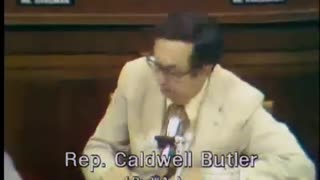 8:57:26
8:57:26
The Memory Hole
16 days agoNixon Impeachment Hearings Day 7 (1974-07-30)
454 -
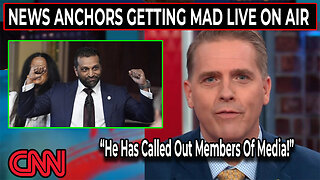 15:55
15:55
TSPLY
1 day agoThe Media Is Very Afraid Of FBI Director Kash Patel
23.2K23 -
 6:57
6:57
Cooking with Gruel
18 hours agoMake Cheese Great Again
19.7K10 -
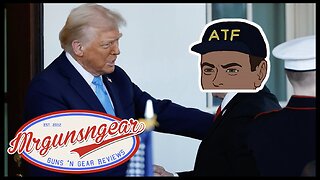 5:17
5:17
Mrgunsngear
21 hours ago $5.20 earnedPresident Trump Has Appointed A New ATF Director
27.5K23 -
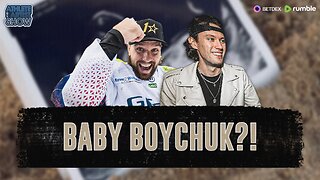 48:17
48:17
Athlete & Artist Show
8 days ago $0.48 earnedS5E1: Chucky Announces First Kid, 4 Nations Face Off, and more!
14.6K -
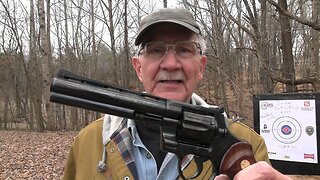 38:30
38:30
hickok45
6 hours agoSunday Shoot-a-Round # 269
41.3K12 -
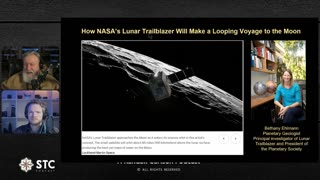 1:39:55
1:39:55
Squaring The Circle, A Randall Carlson Podcast
1 day ago#040 Humanity's Expansion Into The Cosmos: A New Age - Squaring The Circle
23.7K4 -
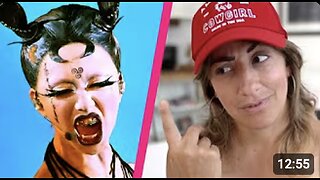 12:54
12:54
ariellescarcella
16 hours agoYou're NOT Queer, Just Annoying And Boring
15.7K9 -
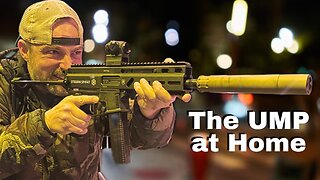 18:57
18:57
Fit'n Fire
12 hours ago $1.13 earnedA PDW That Thumps -- Stribog SP45A3 45ACP
18.8K1 -
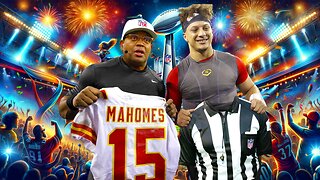 2:06:23
2:06:23
Game On!
16 hours ago $1.90 earnedAnother Sunday Without Football...
27.9K1